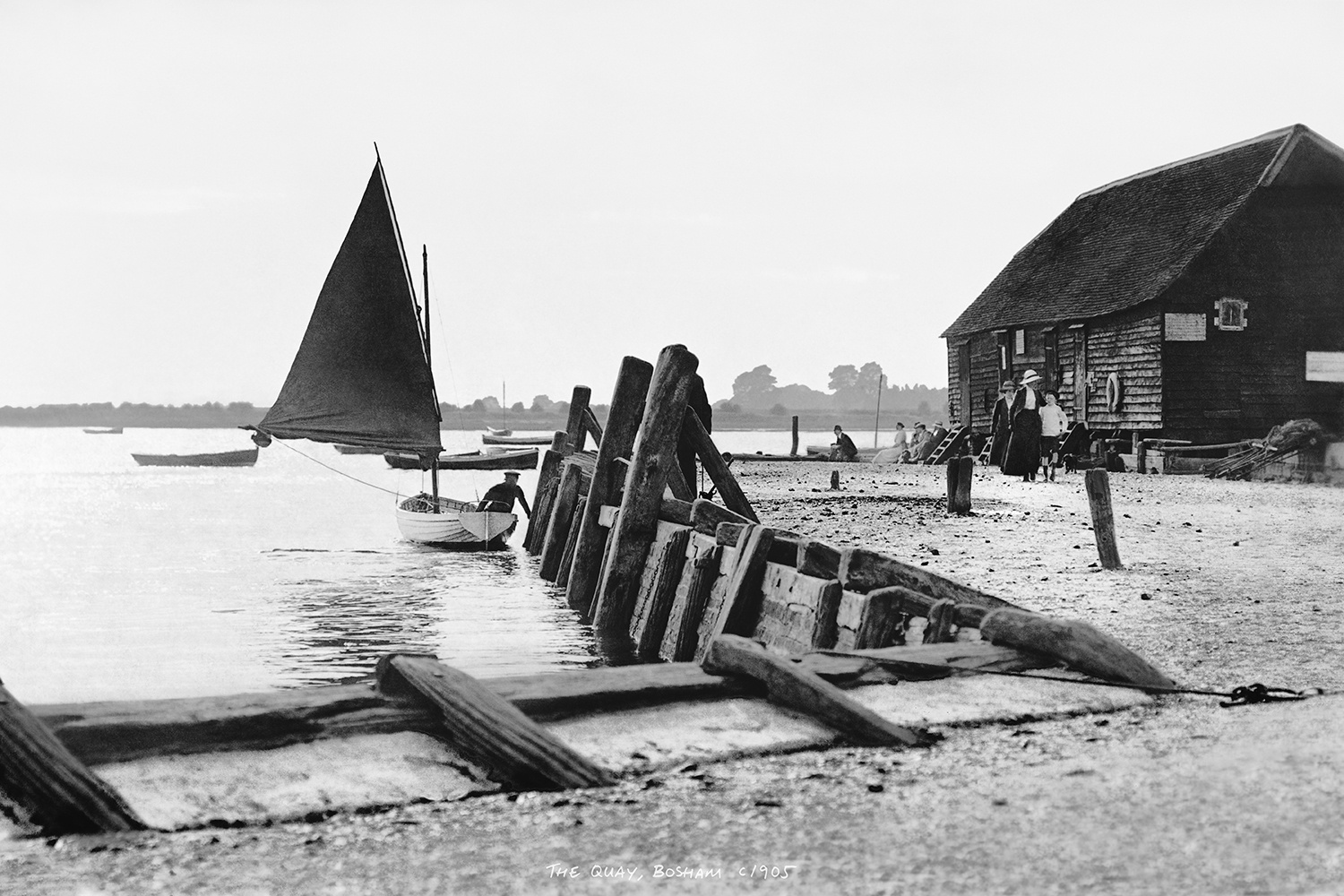Bosham Gallery Archive
In the second half of the nineteenth century there was a boom in the oyster industry within Chichester Harbour, peaking in the last decade. By 1840, the native oyster beds within the harbour had been fished to extinction, so the Bosham fishing fleet had to sail further afield in the English Channel, and waters off the French coast, to dredge up the young oysters in large smacks (fishing boats). These oyster smacks were unwieldy, and with the tide leaving substantial areas of the harbour as mud banks for much of the time, the fishermen relied on small 'run arounds' like the wooden sailboat pictured here, to move the oysters around the harbour.
When the fishermen returned to the harbour with young oysters, they were dropped in nursery beds off Rookwood, West Wittering for 2-3 years to mature, before being moved to oyster ponds along the foreshore in School Rithe and Cutmill Creek, either side of Bosham Quay, for several weeks to cleanse. When the orders came in, the oysters were brought ashore in small rowing boats, packed into baskets in one of Bosham's two oyster barns (one known as the Raptackle pictured here) and taken to the railway station by horse and cart. Most of the oysters headed to the London fish markets, as well as Portsmouth, Brighton, Southampton, Winchester, Hove and Guildford.
© Luke Whitaker
